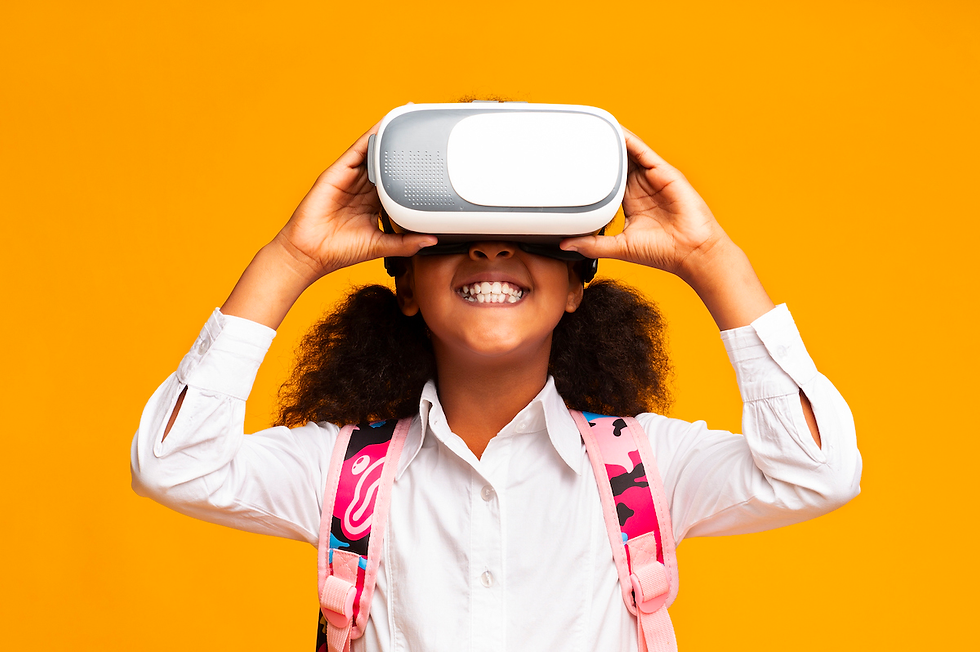Online learning in 2023: Promises and perils
- Thao Vu
- Sep 17, 2023
- 4 min read
Online learning since the pandemic has grown in leaps and bounds: people became more receptive to online learning, learning design became more intentional, and new technologies and learning models emerged to facilitate more effective online learning. Every year, new predictions were made about the direction of online learning. With every new learning trend comes hopes for powerful changes in online education. Yet, many of them turned out to be no more than just temporary hypes.
In this article, we are taking a look at 3 dominant trends in online education through a critical lens. I will analyze the promises and potential perils for them to make a difference to online education.
1. Artificial Intelligence:

No doubt that AI topped the list of the most exciting innovations this year. The advent of new AI tools such as ChatGPT with powerful natural language processing capabilities makes one of the most intuitive EdTech tools that has ever come around while the sophisticated data models allow users to generate output at an amazing level of efficiency.
Promises: The incorporation of AI in online learning holds great potential for adaptive, personalized learning. AI chatbots, for example, can be employed as tutors for students should they seek support and guidance during their independent study. AI can also be incorporated into the learning management system (LMS) to analyze learners' data and progress in order to provide more personalized support for each learner. From an administrative standpoint, AI use can help offload a lot of tasks for educators and address the dichotomy between quality vs. quantity in education.
Perils: Despite these exciting scenarios, AI has also sparked many debates over its uses in education. Educators have expressed concerns over students' misuse of AI such as plagiarism, cheating or an over-dependence on AI that may potentially threaten one's ability to think critically for themselves. There remain ethical concerns over AI's data since the tool relies on Without unanimous acceptance from all stakeholders, or clear policies on AI use in the classroom, AI still has a long way to go before it becomes an integral part of modern education.
2. Immersive Virtual Reality (IVR)
Immersive VR (IVR) is a kind of virtual technology with 3D immersive environments. IVR employs head-mounted gears (HDM), VR glasses, or immersive projections, such as the CAVE system. The term IVR is used to draw a distinction with non-immersive VR, which refers to 3D environments on two-dimensional visual interfaces (such as computer screens and projectors).

Promises: As the name indicated, IVR promises a more immersive learning experience for learners. It is especially useful in situations where the experience is dangerous, difficult, or physically impossible: learners can be transported to Mars in Science class or go back to Medieval times in History class. Additionally, through IVR, learners can try living inside a different body and experience the world from different perspectives: through the eyes of a child, a displaced immigrant, a teenager with depression, or a person with a disability. This allows users to develop an understanding of the intricate human experience of others and foster greater empathy for those whose lives are drastically different from theirs. Because of this ability, IVR is also renowned as “the ultimate empathy machine” and harbors great potential for Social-emotional learning.
Perils: Cost and ease of use stand out as two major barriers to the widespread adoption of VR/AR in the classroom. An IVR headset can cost 1000-4000, which is an outrageous amount given the budget of a normal public school. Technological operation and maintenance of IVR is also challenging for busy educators who are not willing to learn and go through the ordeals of the new technology. More importantly, many empirical studies have pointed out that IVR may actually harm the learning experience if the learning experience is not well designed: IVR can cause cognitive load and/or distraction with its powerful visual elements. Critics of IVR have also pointed out that by providing students with a visual feast of everything they need to see, IVR takes away one's ability to imagine, to dream, to be creative.
3. Microlearning
Micro-learning involves short-form, bite-sized learning content delivered in short bursts. While sharing a common characteristic - brevity, micro-learning contents can vary in length, scope, and format. Learning content can be in the form of small learning units in a course on LinkedIn Learning, short-term learning activities like those on Duolingo, educational videos on TikTok, or even images on Instagram.

Promises: There are definitely myriad merits to microlearning. Because of its brevity, micro-learning forces the learning content developer to condense and select only the most important information and trim down unnecessary details. The information needed to be delivered thus, becomes more digestible. Unnecessary distractions and boredom are minimized and learners can stay engaged with the topic. In the context of workplace learning, where learners are busy professionals, micro-learning is a means to help one upskill efficiently.
Perils: Because there can be so much to be packed in a few minutes of content, learners can miss out on the full picture of what they are studying or fail to develop a complete understanding of the subject matter. A person may easily get the basics of Python coding via a Google short course, but developing a complete understanding of coding and computational thinking so that she can approach a wide variety of problems will take months if not years. This is the reason why companies still favor those who have a Bachelor in Computer Science over someone with a certificate from a short course. This brought about another problem, because micro-learning content is not and cannot be accredited, they do not appeal to those who appreciate a proper recognition of their study.
In conclusion, online learning is a developing field with much room to grow and many exciting possibilities to be realized. AI, IVR, and Micro-learning are three potential innovations that may bring about significant changes to the online education landscape. Still, there are barriers that they need to address before bringing any transformation to online learning and teaching.
No one can be sure about the future. But for now, watch this space!




Comentários